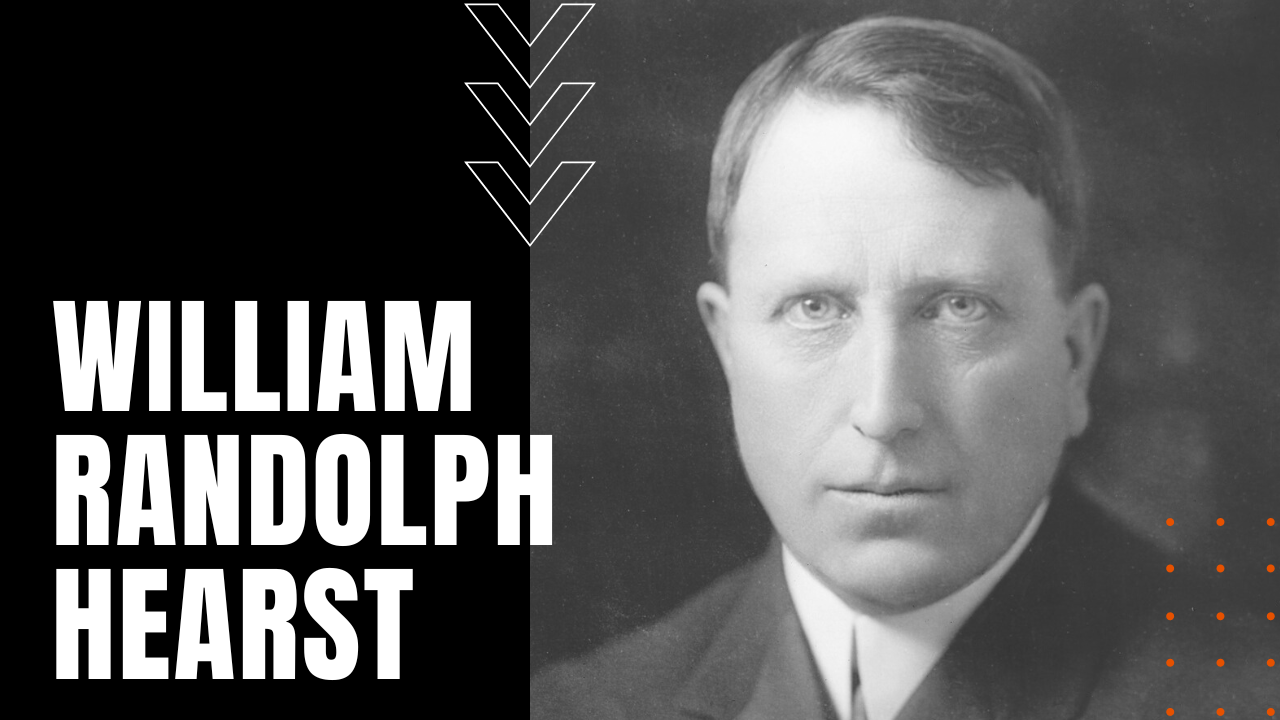William Randolph Hearst: Biography of a Media Mogul

Who Was William Randolph Hearst?
Born in 1863 San Francisco—the only son of Gold Rush Era mining tycoon George Hearst—William Randolph Hearst was expelled from Harvard for a litany of infractions, before convincing his father to hand him control of his failing San Francisco Examiner newspaper, which he soon grew from a circulation of 5,000 to over 55,000, thanks to his employment of writers like Mark Twain, Ambrose Bierce and Jack London.
Hearst and Yellow Journalism
Adopting a sensationalist style of reporting, replete with salacious headlines and oftentimes scandalous images, Hearst soon grew his yellow journalistic empire to include New York City’s Morning Journal, running head to head with the Journal’s chief competitor, Joseph Pulitzer’s New York World, who together vied for the attention and money of the working class of New York City.
During the Progressive Era, Hearst used his growing media empire to strike back against corporate monopolies and corruption in government, while his calls for an eight-hour workday made him a champion of the working class against the American elite. Elected to the U.S. House of Representative from New York in 1902, Hearst would go on to lose a long string of political campaigns. His biggest loss included a run for president in 1904, which Teddy Roosevelt ultimately won in a landslide victory against Alton B. Parker.
At the same time, Hearst expanded his publishing empire by acquiring newspapers in Chicago, Los Angeles and Boston, not to mention a string of successful magazines including Cosmopolitan, Good Housekeeping, Town and Country and Harper’s Bazaar. He also dove into the film industry, producing weekly newsreels and serialized dramatic films shown in movie houses across the nation.
Hearst Castle and Court
Despite his marriage to Millicent Willson—a union that produced five sons—Hearst took up with young actress Marion Davies, throwing lavish parties in Hollywood with film icons and the rich and powerful, before building his palatial hilltop estate—close to a quarter million acres—at San Simeon California, filling Hearst Castle, as it became known, with an ever-expanding collection of art, furniture and antiques.
Hearst’s working-class appeal began to erode when he likened FDR’s New Deal to Soviet-style communism, followed by his 1934 visit to Germany, including a meeting with Adolf Hitler, later publishing a string of Hitler’s radicalized essays in many of his newspapers.
Loosely parodied in Orson Welles’ wildly successful movie, Citizen Kane—a film which angered Hearst with its depiction of Marion Davies, Hearst passed away from a heart attack and a stroke on August 14th, 1951, making William Randolph Hearst, one of the founding fathers of yellow journalism in America.
